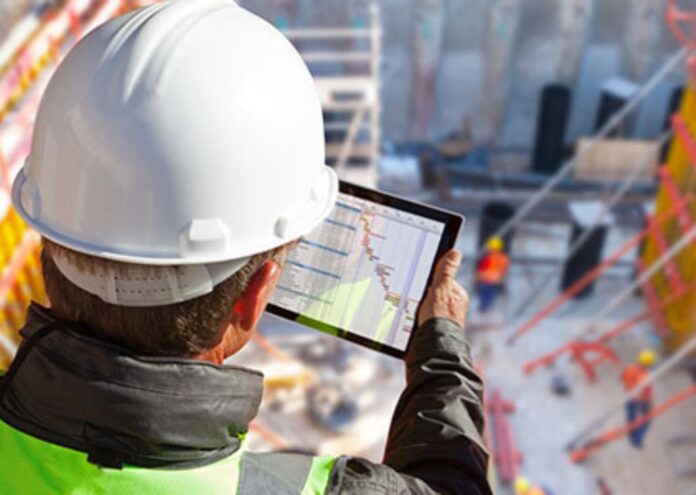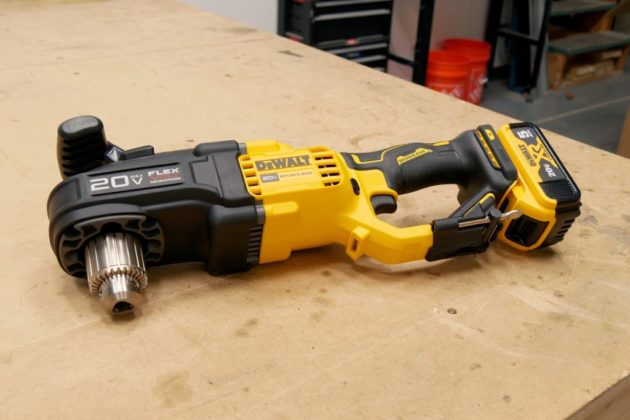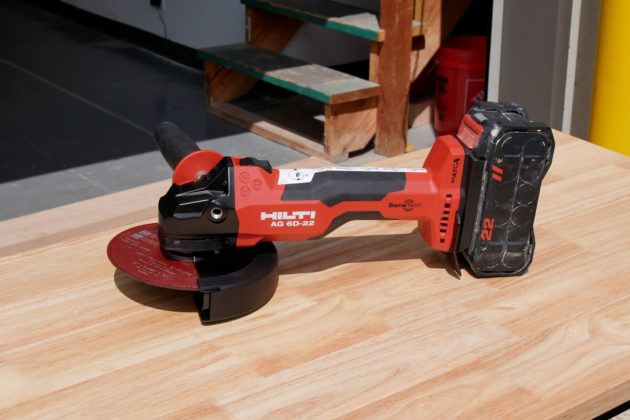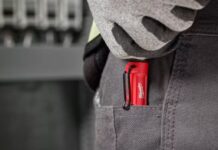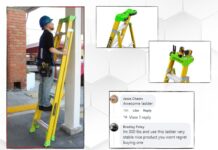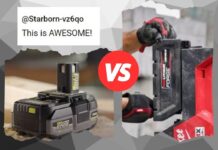The skilled trade professions are one of the most dangerous work fields, with construction injuries accounting for over 50% of workplace accidents. Jobsite accidents, heart hazards, musculoskeletal injuries are all risks these workers face at work each day. But here is some good news. Multiple tool brands are developing better safety technology for power tools, equipment, and even workwear meant to prevent these injuries and even death.
Today we take a closer look at the brands and products that are paving the way for a safer workplace for skilled trade workers.
Kinds of Safety Technology
Power Tool Safety Trends
Over the last few years there have been at least four key trends power tool engineers have been following to make existing tools safer. The trends we noticed are:
- Built-in movement sensors.
- Auto shutoff or kill switch features.
- Redesigned to be lighter and/or more ergonomic.
- Better batteries.
Safety Sensors
A lot of power tools are being redesigned with movement sensors that can detect when a tool makes a sudden or irregular movement, or detects a tool is in an unideal position.
The DeWALT 20V Stud and Joist Drill we reviewed last year is a great example of this. This drill has DeWALT’s E-Clutch System®. A stud and joist drill can swing out while in use and injure the user. The E-Clutch System® senses sudden or big movements to the left or right and will turn the drill off to protect the user.
The Hilti Nuron AG 6D-22 Grinder is another power tool and possibly the first angle grinder with a built-in safety sensor, which Hilti calls “SensTech”. SensTech senses those same big and sudden movements, but in any direction to protect the user from kickback. SensTech can also tell if the grinder is held vertically – this is an unideal position and the tool won’t run when held like this.
Overall, the trend in these sensors is to lookout for dangerous movement and shutoff tools before they cause injury. Which leads up to our next power tool safety technology trend…
Auto Shutoff & Kill Switch Features
As we mentioned, power tool safety technology is advancing to prevent injury before it happens. Auto shutoff is a great preventative feature. We’ve also noticed both the addition and redesign of kill switches so that they are quick and easy to access when you need to.
The obvious difference between these two features is that auto shutoff is the tool or machine turning itself off to prevent injury, and a kill switch is a way for the user to quickly and safely turn off the tool.
Kill switches aren’t new, but there’s a heightened emphasis on their location and ease of use. A kill switch is a great feature, but it’s useless if the user can’t easily trigger it when needed.
Lightweight & Ergonomic Redesign
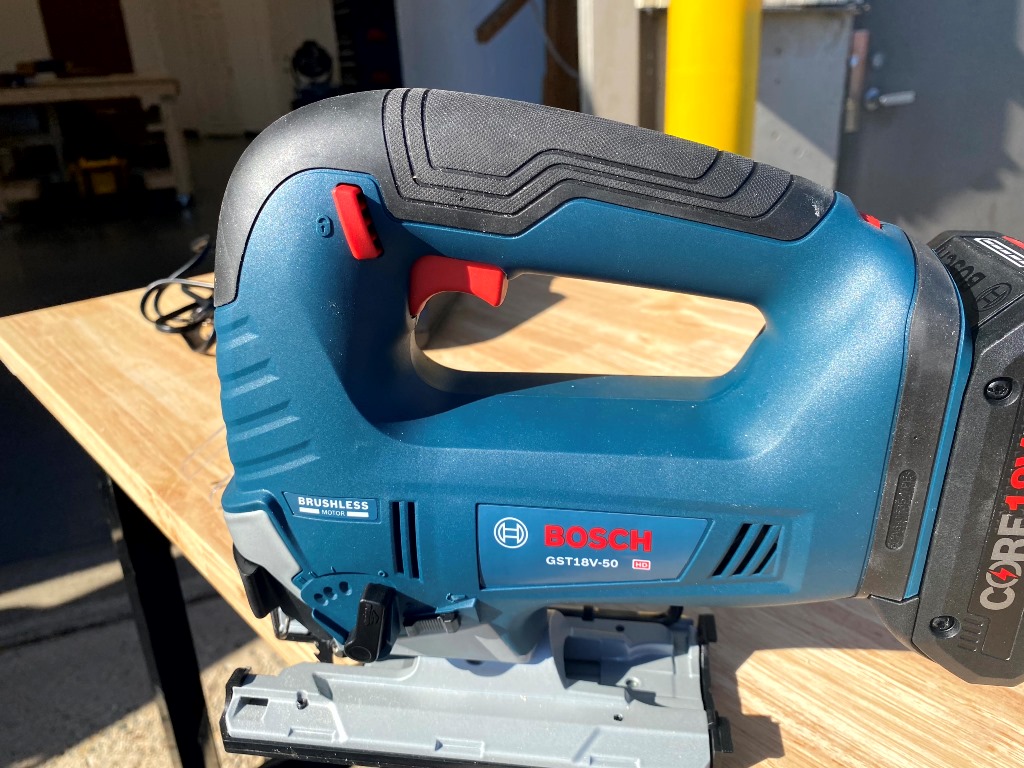
Power tools are constantly being redesigned to be lighter than previous models. There is also an emphasis on ergonomics. Both of these contribute to improving the user experience by creating power tools that are easier to control.
But is redesigning power tool considered “safety technology”? Actually, it is.
Along with statements of newly designed tools being lighter, they are often more powerful as well. This ties back into the tech and battery design. Improving these elements usually involves making them more compact without making them weaker, which feeds into a more positive and safer user experience.
Better & Safer Battery Technology
Cordless power is continuously improving, but packing in more power is not necessarily the #1 priority. Power tool and battery manufacturers know that better heat management leads to a better battery, whether it’s tabless lithium, a graphene battery, or a better temperature management system.
All of these options result in a battery that can go longer without overheating, has better energy transfer, and improves all-around battery life.
Ergonomic Support
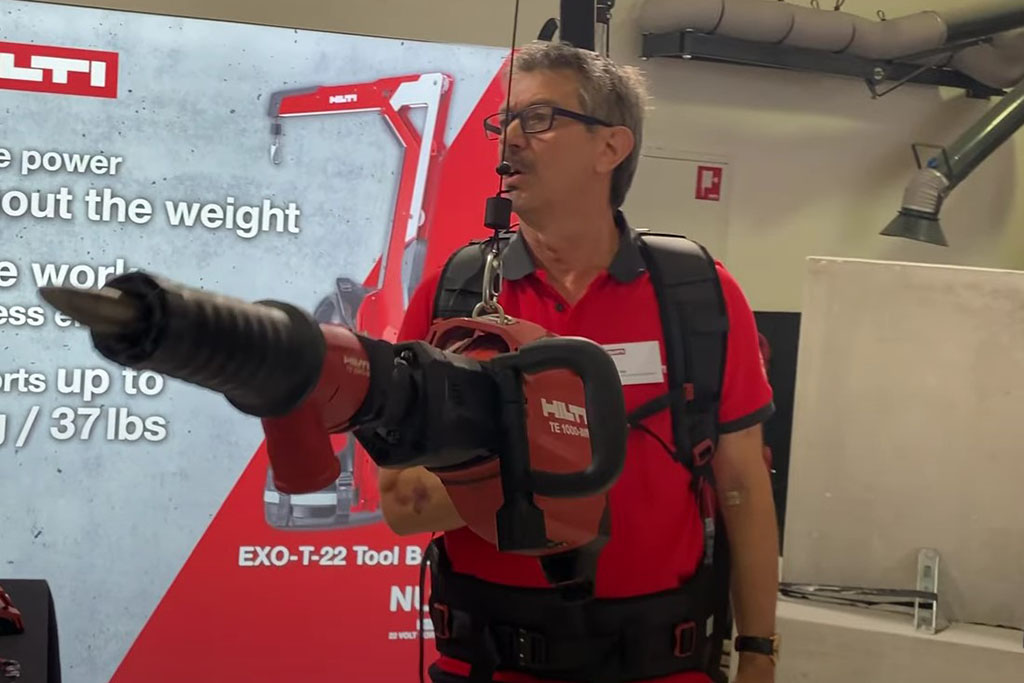
As power tools have become safer engineers have been able to widen their view and look at other causes of accidents and injuries. This has lead to the development of more ergonomic support safety technology and equipment meant to protect the long-term musculoskeletal health of skilled trade professionals, especially those in the construction field.
Hilti
Hilti has developed two different ergonomic supports recently. In 2023 the company released the Hilti EXO-S Shoulder Exoskeleton, it was designed to help with overhead tasks. This year Hilti released the Hilti EXO-T-22 Tool Balancer. The Tool Balancer is designed to give a more “zero-gravity” experience during heavy wall demolition, it relieves nearly 40 lbs. of carrying weight for the user, and as a bonus allows for more drilling angles.
Hilti is the most accessible brand for this ergonomic support tech and equipment for skilled trade professionals, in our opinion. The products are readily accessible on the Hilti site and are designed for the construction industry.
Competitors
- Festool: The Festool ExoActive is another upper body exoskeleton support for construction workers. Unfortunately, as of right now the Festool ExoActive has limited availability at best.
- EksoBionics: This company primarily focuses on products for rehabilitation, but does have a variety of construction products.
- Cyberdyne: Another primarily medical company, but does offer some “non-medical”.
Both Panasonic and Toyota have been developing their own exoskeletons, but no big developments have been made since 2019.
Affordable Alternatives
The Hilti exoskeletons range from $1,449-1,999. These products are generally intended for large construction teams and the industrial construction field. Here are some everyday ergonomic supports to prevent and alleviate aches and pains:
For everyday strategies to prevent injuries, the CDC created the free download Simple Solutions Ergonomics for Construction Workers PDF.
Smart Workwear & PPE
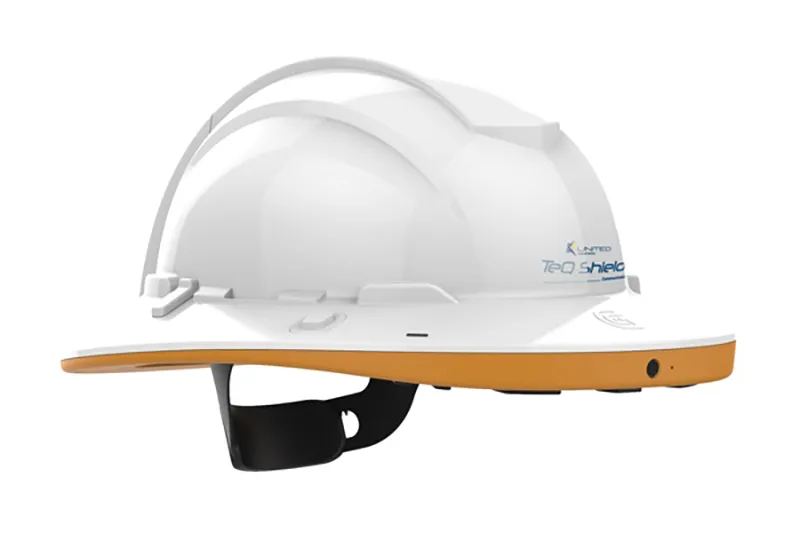
Wearable technology, like FitBit and smart watches, is making its way into workwear and personal protective equipment (PPE). No, it’s not to just count your steps. This technology offers a variety of safety features that includes:
- Stress detection among workers
- Fall detection.
- Send SOS/emergency alerts.
- Provides GPS directions and location.
- Effective communication between workers.
- Better equipment monitoring.
All of this allows workers to better manage their teams. They’re able to identify stressed workers who need a break, pinpoint and get help to an injured worker, ensure tools are ready and safe to use, and more.
Smart watches and high-tech walkie-talkies are the most popular smart devices. However, more smart devices are being developed.
Smart Hard Hats
The Teq Shield Communicator is one smart hardhat in development. In additional to standard ANSI Glass-G certification, it offers precise location tracking, has presence and proximity detection, and has audio and video capabilities.
SolePower Smartboots
Smart work boots is an industry many are competing for, but SolePower has made the biggest strides (pun intended).
SolePower Smartboots are currently designed for military, first responders, and industrial workers. They are designed to provide real-time insights while monitoring energy and fatigue, detecting falls and injuries, worker tracking, and proximity detections and alerts.
These boots don’t appear to be available to the public yet, but you can request a demo.
How Can We Improve Worker Safety?
Power tools and equipment are reaching an almost “futuristic” standard when it comes to safety technology and features. But how can we take it further?
What more can manufacturers do to prevent injury and death for skilled trade professionals? Share your thoughts in the comments. Also tell us about any innovative safety technology that we missed.

